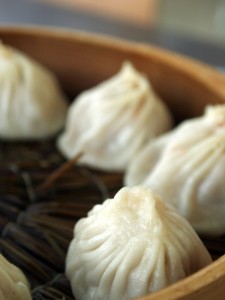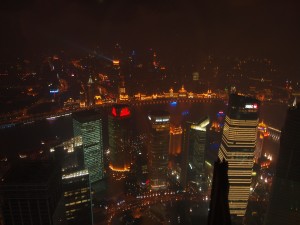
Having spent decades energetically trying to purge itself of any traces of its colonial and pre-colonial past, Shanghai had a turnabout just in time for the 2010 Expo. Two years ago, there wasn’t a tree to be seen in the city; today, most of the main streets are lined with thousands of plane trees which all look to be about 20 years old. It’s amazing what you can do with a command economy; there was, it seems, a forest of the things somewhere inland which have been carefully uprooted and planted wholesale along Shanghai’s bare roadsides. We visited the Jing’an temple, the original building long obliterated but now being newly rebuilt for tourists and worshippers (in approximately that order), the finishing touches being installed as we walked around by artisans. The core of the old city, by the Yu Yuan gardens and the City God temple, has been sanitised and rebuilt in antique style, all carefully paved with concrete and lined with tourist information booths, resulting in a sterilised pedestrian precinct clad in red lacquer and glossy varnished wood.
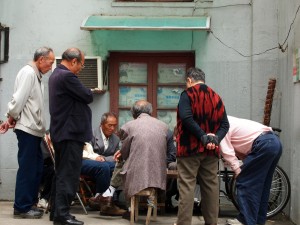
It all feels very disjointed. You’ll still find pockets of the old city in there (the streets around the pedestrianised area are untouched, the Yu Yuan gardens are gloriously crumbly and the City God temple, despite a restoration about five years ago, feels much less Disney than the surrounding area), and areas like the French Concession keep much of their colonial atmosphere. Best of all, though, for those looking for colonial Shanghai, is the Bund.
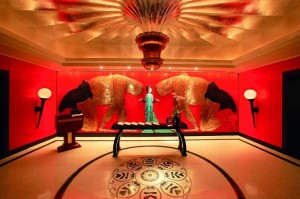
Until a couple of years ago, the arc of neo-classical and deco buildings curving alongside the Huangpu river wasn’t somewhere you’d want to walk, with an eleven-lane road eating up the space where the promenade gardens used to be, a huge flyover blocking much of the view and a large concrete bridge. Miraculously, the whole thing has been swept clean – the road narrowed, the flyover pushed into a tunnel, the bridge demolished – and the promenade is now open again for the first time in decades. It’s heaving with people, especially at sunset, when the view of the lights over sci-fi modern Pudong contrasts so extravagantly (and really rather wonderfully) with the classical sweep of the Bund. Rents are high here, so the Bund is packed with luxury goods shops and some of the city’s pricier restaurants. We were celebrating, so we headed for the Whampoa Club, in the gorgeous surroundings of 3 the Bund. You’ll find classical Shanghai cuisine here (fifteen pages of it) alongside regional specialities from other parts of China, in a lavishly decorated space dense with lacquer, gold leaf and bronze – and the inevitable wall of awards.
We were here to sample some traditional Shanghai dishes, and ordered the Legendary Su Dong Po Braised Pork: fat, braised belly in a sweet, glossy red bean and soy sauce. It’s a fatty dish, but the many hours of braising result in cubes of tender, intensely savoury pork, the fat carrying the velvety flavour to every corner of the mouth.
The atmosphere can’t be beaten. What I thought was a piped recording of extraordinarily delicate Chinese music turned out to be sound drifting from two ladies with a flute and a dulcimer in the corridor leading to the restaurant entrance. And part-way through the meal, an oddly magical power cut left us illuminated by candles glinting off the chandelier in the centre of the room and the weird glow of Pudong slanting through the window. “This,” said Dr W, “Is a super-romance-peak-experience.”
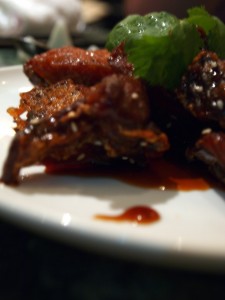
Smoked Old-Fashioned Shanghaianese Pomfret is a Shanghai cuisine A-lister. It comes in bite-sized pieces, fried crisp with a caramelised coating and more sweet, soy-based sauce. It’s another classical dish, and the name is misleading; the fish itself is never actually smoked, but is cooked in a wok of fuming oil. A dish of gai lan (mustard greens) in XO sauce made in-house, thick with wind-dried scallops and pork, offered a respite from all the protein and fat – just as well, because we’d also ordered a Beijing duck.
Portions at the Whampoa club are huge – this is probably somewhere you’re best off visiting in a large group if you want to sample more from the long menu – and we’d already eaten a lot, so we passed on the stir-fried meat of the duck, just concentrating on the skin in little egg crepes. In texture, the skin was very different from what we’d eaten in Beijing (and much more traditional – I’ve never seen the puffy, popcorny skin at Da Dong replicated anywhere else). Molten fat gushed from under the skin as it was carved by the table. The skin on this duck was less crisp than the specially prepared skin at Da Dong, but ultimately rather better tasting, presumably because of the lubrication from all that fat. The duck sauce was also more up my alley, with a strong taste of rice wine and a dark sweetness.
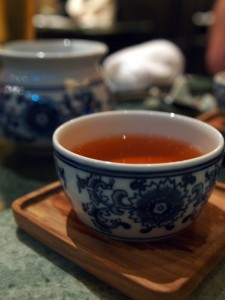
We drank very pricey medicinal tea from the lengthy tea menu, in an attempt to clear our heads of the accumulated smog and traffic fumes from a few days in Beijing. “Clearing Sputum” tea does not have a pretty name, but it’s a beautiful drink; dark apricot in colour, with notes of orange, camphor and osmanthus. I am not at all sure it worked, but nothing ventured and all that. Tsing Tao beer, on the other hand, worked splendidly to do that thing that beer does.
The menu is available in English, and while not all the members of the very attentive staff speak English, you’ll find that a little miming, pointing and smiling go a long way. If this fails, there’s always someone on the staff who does speak the language, so you won’t get stuck. We didn’t get as far as dessert; the other dishes were in that space where things taste so good you can’t stop eating even though you are bloatedly, lumpishly full. We were, and we couldn’t.
The duck and the tea were both on the pricey end of the menu, and we’d drunk several beers; the eventual bill of RMB 900 (£90) is a hideous price for much of China but pretty much what you’d expect at one of the restaurants on the Bund. And do you know what? It was worth every penny.

